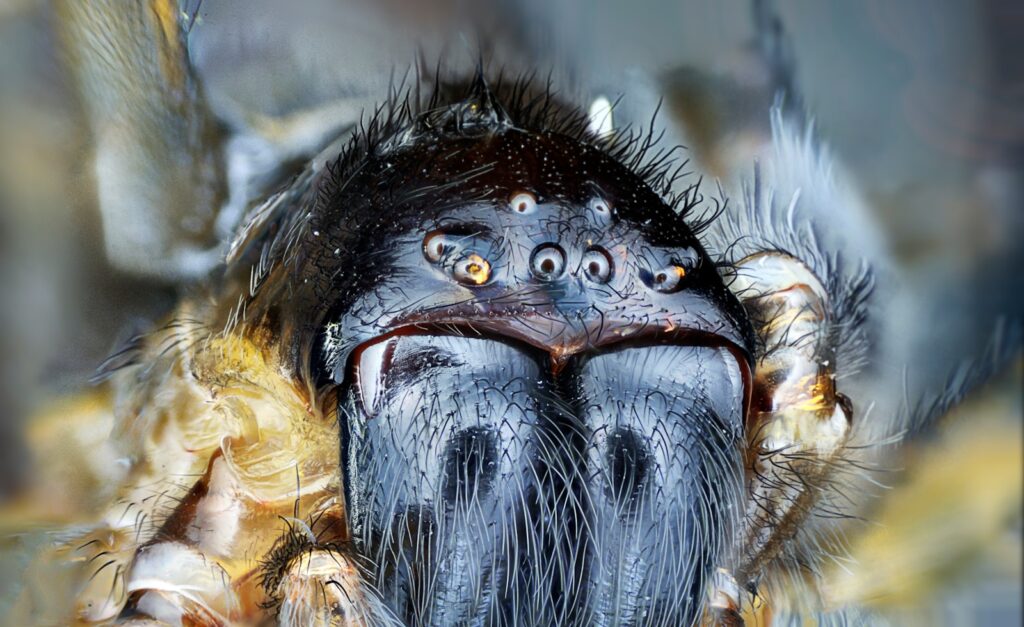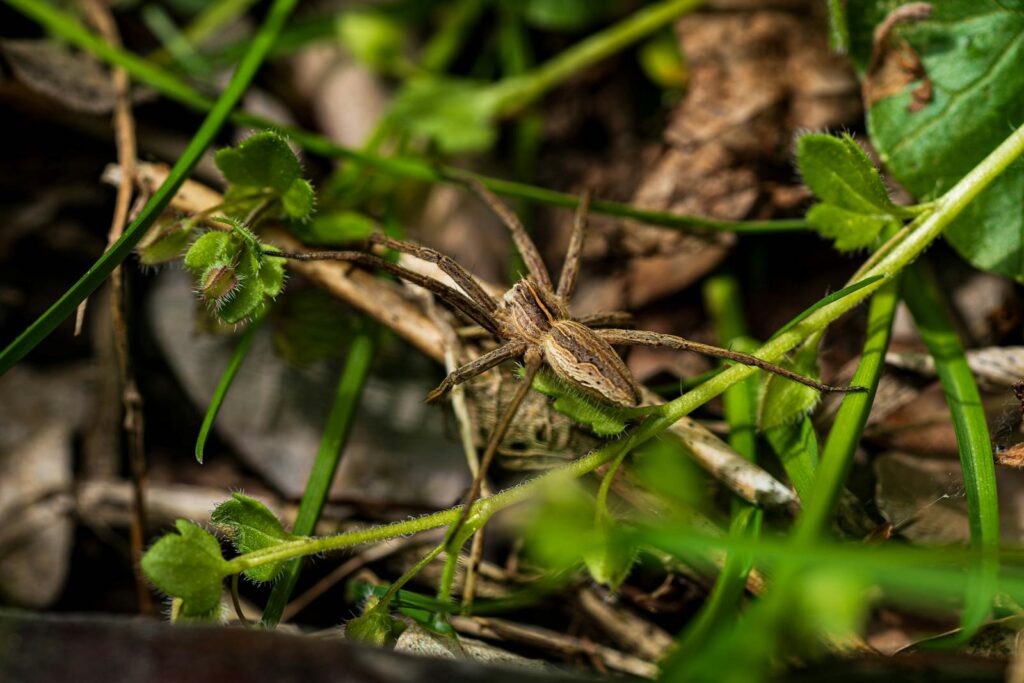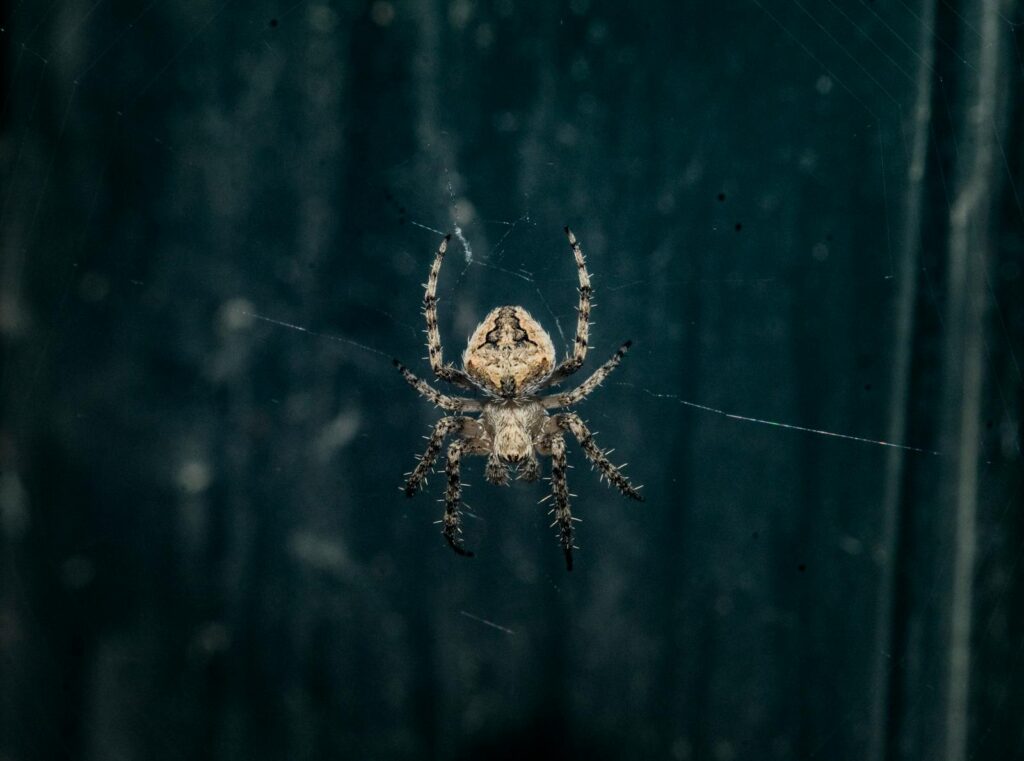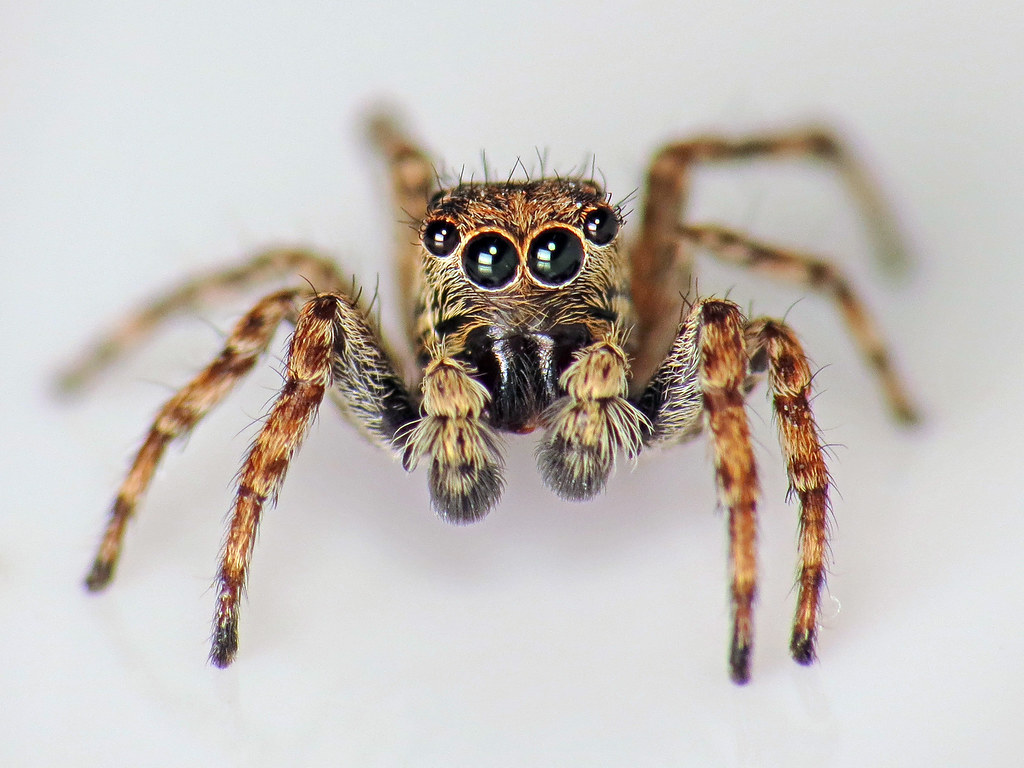In the vast realm of arachnology, where eight-legged creatures have both fascinated and frightened humans for centuries, one remarkable individual stands out not for its size, venom, or web-spinning skills, but for its incredible longevity. Number 16, a female trapdoor spider from Australia, holds the distinguished title of being the longest-living non-venomous spider ever documented in scientific history. Her extraordinary lifespan challenges our understanding of arachnid biology and offers valuable insights into the factors that influence longevity in the animal kingdom. This remarkable creature lived quietly in her burrow for decades while researchers diligently tracked her life, ultimately revealing surprising aspects of spider longevity that continue to intrigue scientists today.
Meet Number 16: The Record-Holding Spider

Number 16, as she was pragmatically named by researchers, was a female Giaus villosus, commonly known as an Australian trapdoor spider, who lived in the wild in North Bungulla Reserve near Tammin, Western Australia. This unassuming arachnid achieved something extraordinary by surviving for 43 years, from her discovery as a spiderling in 1974 until her death in 2016. Prior to Number 16’s documentation, the longest-living spider on record was a 28-year-old tarantula, making this trapdoor spider’s longevity particularly remarkable. Her life was monitored by dedicated researchers who tracked her burrow and activities across multiple decades, creating one of the longest continuous studies of an individual spider in scientific history.
The Discovery and Documentation Process

Number a16’s remarkable life story began in 1974 when arachnologist Barbara York Main initiated a long-term study of trapdoor spiders in Western Australia. Main developed an innovative approach to track individual spiders by marking their burrows with metal stakes and maintaining detailed records of their locations and activities. This meticulous documentation allowed researchers to follow specific spiders over extended periods, revealing previously unknown aspects of their lifecycles and behavior patterns. What started as a general population study eventually became a record of exceptional longevity as Number 16 continued to thrive year after year, outliving many of her neighbors and even some of the researchers who initially tagged her burrow. The dedicated scientific observation that followed Number 16 from spiderling to record-holder represents an extraordinary commitment to understanding these mysterious creatures.
Understanding Trapdoor Spiders: Biology and Behavior

Trapdoor spiders belong to the family Idiopidae and are characterized by their unique hunting strategy of constructing silk-lined burrows with camouflaged doors that they use to ambush passing prey. Unlike many spider species that roam widely, female trapdoor spiders like Number 16 are remarkably sedentary, often spending their entire lives within the same burrow they constructed as juveniles. They are expert ambush predators, waiting patiently with their trapdoors slightly open, then springing out to capture insects that venture too close to their carefully concealed homes. Female trapdoor spiders generally have longer lifespans than males, as males typically leave their burrows after reaching maturity to search for mates, exposing themselves to predators and environmental hazards. This sedentary lifestyle, coupled with a slow metabolism and reduced exposure to predators, contributes significantly to the potential longevity of female trapdoor spiders.
The Science Behind Spider Longevity

The exceptional lifespan of Number 16 challenges conventional understanding of spider biology, as most spider species typically live between one and three years. Several factors contribute to the remarkable longevity observed in trapdoor spiders, including their low metabolic rate, minimal physical activity, and protected underground habitat. Female trapdoor spiders also practice periodic dormancy during harsh environmental conditions, effectively “pausing” their metabolic processes during unfavorable seasons. Additionally, these spiders have evolved efficient mechanisms for conserving energy, including infrequent molting compared to other spider species and reduced reproductive output. Scientists believe that understanding these biological adaptations could provide valuable insights into the mechanisms of aging across different animal taxa and potentially inform human longevity research by highlighting fundamental biological processes that influence lifespan.
Comparing Number 16 to Other Long-Lived Arachnids

Number 16’s remarkable 43-year lifespan significantly exceeds the documented longevity of most other arachnids. Prior to this record, a 28-year-old tarantula held the title for longest-lived spider, while most common house spiders survive only 1-2 years in optimal conditions. Some tarantula species are known for their relatively long lives, with females of certain species living 15-30 years in captivity, though rarely approaching Number 16’s four decades. Interestingly, scorpions, which are related to spiders, can live 5-25 years depending on the species, with the emperor scorpion capable of surviving up to 30 years in captivity. The significant difference between Number 16’s lifespan and those of other arachnids has prompted researchers to investigate whether trapdoor spiders possess unique biological characteristics or whether environmental factors played a crucial role in her exceptional longevity.
The Research Legacy of Barbara York Main

The discovery and documentation of Number 16’s remarkable life would not have been possible without the pioneering work of arachnologist Barbara York Main, who began studying trapdoor spiders in the 1950s. Main’s dedication to long-term ecological research created one of the most valuable continuous studies of spider populations ever conducted, spanning over six decades. Her innovative approaches to tracking individual spiders and documenting their life histories transformed our understanding of arachnid longevity and behavior patterns. Though Main passed away in 2019 at age 90, her research legacy continues through the work of scientists who have built upon her foundational studies, including Leanda Mason and Grant Wardell-Johnson who reported Number 16’s death and confirmed her record-breaking status. Main’s commitment to studying these creatures across her entire career exemplifies the value of long-term ecological research and highlights how patient observation can reveal unexpected biological phenomena.
The Lifestyle Factors Contributing to Extreme Longevity

Number 16’s extraordinary lifespan can be attributed to several key lifestyle factors that differentiated her existence from that of most other spiders. Her sedentary existence within a single, well-constructed burrow minimized exposure to predators, harsh weather conditions, and other environmental hazards that typically shorten spider lives. Female trapdoor spiders also benefit from their energy-efficient hunting strategy, which involves waiting for prey rather than actively pursuing it, thus conserving valuable resources. Additionally, these spiders have evolved to survive Australia’s periodic droughts by sealing their burrows with particularly thick trapdoors and entering states of reduced metabolic activity. Number 16’s burrow was located in a protected reserve, which likely contributed to her survival by limiting human disturbance and habitat destruction. The combination of these factors created ideal conditions for extending her natural lifespan well beyond what researchers previously believed possible for arachnids.
The Significance of Number 16’s Death

When researchers discovered Number 16’s burrow had been abandoned in 2016, it marked the end of an unprecedented arachnid life history and provided valuable closure to a remarkable scientific observation. Her death was ultimately attributed to a parasitic wasp attack, a common natural predator of trapdoor spiders that lay eggs on the spider, with the hatching larvae eventually consuming their host. The timing of her death at 43 years established a new benchmark for spider longevity that may stand for decades to come. Beyond setting a record, the conclusion of Number 16’s life allowed scientists to examine her abandoned burrow, collecting data on its construction, depth, and condition after more than four decades of continuous occupation. The documentation of her full life cycle from spiderling to death provided a complete dataset that continues to inform scientific understanding of arachnid biology and aging processes.
Conservation Implications of Long-Lived Spider Species

The discovery of Number 16’s exceptional longevity has significant implications for conservation biology, particularly regarding slow-reproducing species with lengthy lifespans. Trapdoor spiders typically reproduce infrequently, with females producing relatively few offspring compared to many other spider species. This reproductive strategy, combined with their extremely long potential lifespan, makes their populations particularly vulnerable to habitat disruption and environmental changes. A single development project could potentially eliminate multiple generations of these spiders, with population recovery taking decades or even centuries. The knowledge of their exceptional longevity has prompted increased protection for areas with known trapdoor spider populations, highlighting the importance of considering life history characteristics in conservation planning. Number 16’s story has become a powerful example used by conservationists to illustrate why preserving habitats for seemingly unremarkable species can be critically important to maintaining biodiversity.
Scientific Value of Long-Term Ecological Studies

Number 16’s record-breaking lifespan would never have been documented without the commitment to long-term ecological monitoring that characterized Barbara York Main’s research program. This spider’s life story underscores the irreplaceable value of studies that extend across decades, capturing biological phenomena that occur on timescales longer than typical research funding cycles. Many significant ecological patterns and life history characteristics would remain completely unknown without sustained observation over many years or decades. The discovery highlights a concerning reality in modern scientific research where short-term projects are often favored over the multi-generational studies needed to document slowly unfolding natural processes. Number 16’s case has become a compelling argument for increased investment in long-term ecological monitoring programs that can reveal unexpected insights about species longevity, population dynamics, and responses to environmental change that would be impossible to detect in shorter studies.
Popular Fascination with Number 16

The story of Number 16 captured substantial public interest when her record-breaking status was announced in 2018, generating headlines around the world and sparking widespread fascination with trapdoor spiders. Her extraordinary longevity challenged common perceptions about spiders as short-lived creatures and provided an accessible entry point for discussing arachnid biology with the general public. Social media platforms buzzed with conversations about this remarkable spider, with many people expressing surprise and newfound appreciation for these often-misunderstood creatures. Number 16’s story has been incorporated into educational materials, nature documentaries, and museum exhibits focused on arachnid biology and biodiversity. The public fascination with this record-holder demonstrates how individual animal stories can effectively engage people with broader concepts in biology and conservation, potentially transforming fear or indifference toward spiders into curiosity and respect.
Future Research Directions Inspired by Number 16

The documentation of Number 16’s exceptional lifespan has inspired numerous new research directions in arachnology and comparative biology. Scientists are now investigating whether her longevity represents an outlier or if trapdoor spiders regularly live for multiple decades when environmental conditions remain favorable. Researchers have established new long-term monitoring programs for trapdoor spider populations in various habitats to determine whether longevity patterns vary geographically or in response to different environmental conditions. Molecular biologists have become interested in studying the genetics and cellular biology of these spiders to identify potential mechanisms that might explain their extended lifespans, particularly focusing on telomere maintenance and cellular repair systems. Additionally, comparative studies examining longevity across different arachnid families may help identify evolutionary patterns related to lifespan extension. Number 16’s remarkable life has effectively opened an entirely new chapter in arachnid research, with scientists hoping to uncover fundamental biological insights by understanding how these spiders can survive for such extraordinary periods.
Lessons from the World’s Longest-Living Spider

The extraordinary life of Number 16 offers profound lessons that extend well beyond arachnology. Her record-breaking existence demonstrates the value of patience, both in scientific observation and in appreciating the diverse timescales at which different organisms experience life. Her story highlights how seemingly ordinary creatures can harbor extraordinary biological capabilities that challenge our assumptions about the natural world. For scientists, Number 16 serves as a powerful reminder that long-term commitment to research questions can yield unexpected discoveries that transform our understanding of biology. For conservation biologists, her life emphasizes the importance of habitat preservation for species with lengthy lifespans and limited reproductive output. Perhaps most importantly, this remarkable spider’s story invites us to reconsider our relationship with the countless unassuming creatures that share our world, many of which may possess equally fascinating and yet-to-be-discovered biological traits that could expand our understanding of life itself.
Conclusion

In conclusion, Number 16’s remarkable 43-year life represents far more than a simple biological curiosity or record-breaking statistic. This unassuming trapdoor spider has fundamentally reshaped scientific understanding of arachnid biology while highlighting the critical importance of long-term ecological studies. Her extraordinary longevity challenges preconceptions about invertebrate lifespans and raises fascinating questions about the biological mechanisms that govern aging across different animal groups. As scientists continue to build upon the legacy of Barbara York Main’s pioneering research, Number 16’s quiet life in her Australian burrow stands as a powerful reminder that the natural world still holds countless secrets waiting to be discovered by those patient enough to observe them. In the story of one remarkable spider, we find compelling evidence of nature’s boundless capacity to surprise and inspire us, even in its smallest and most misunderstood creatures.

